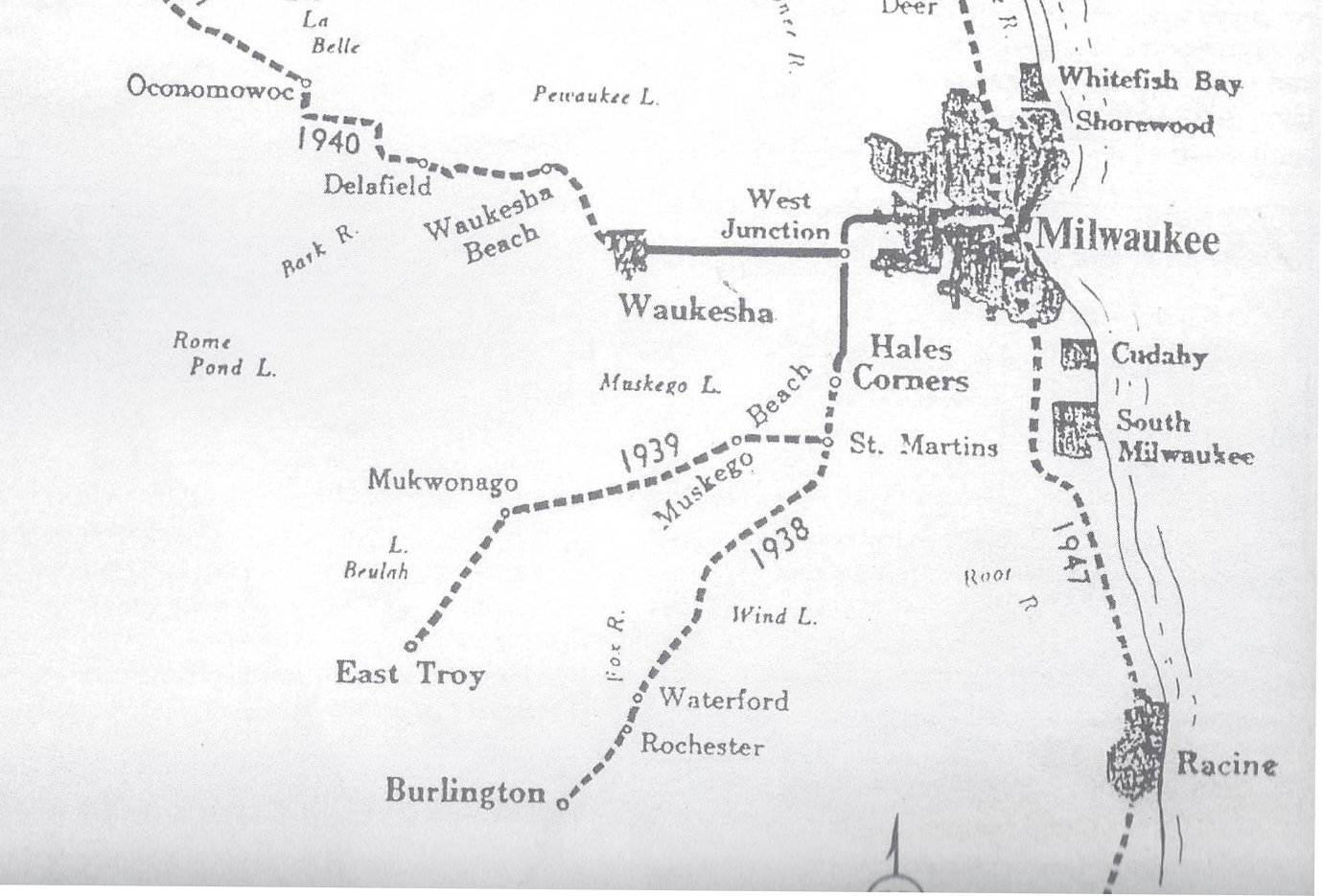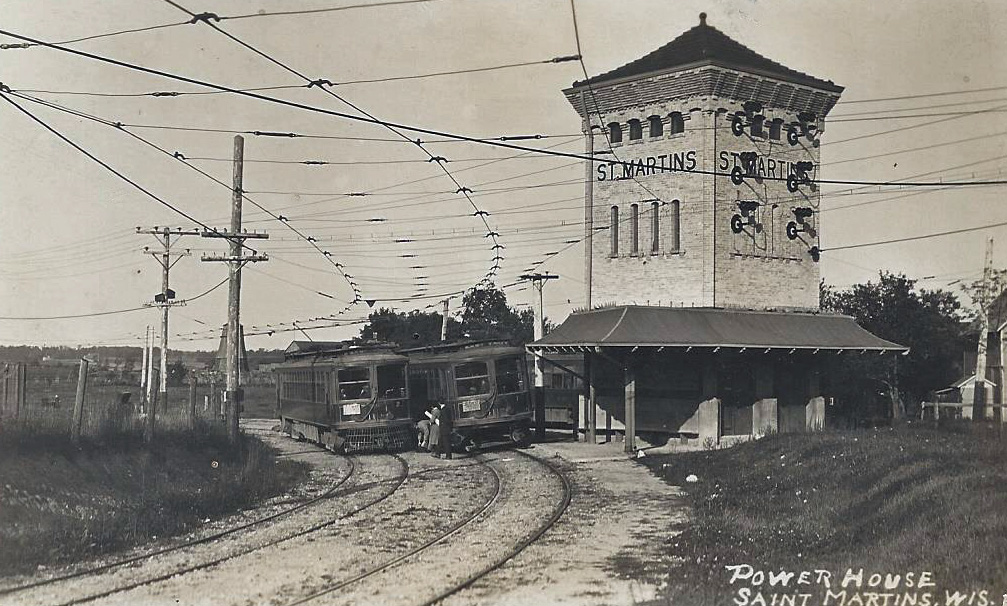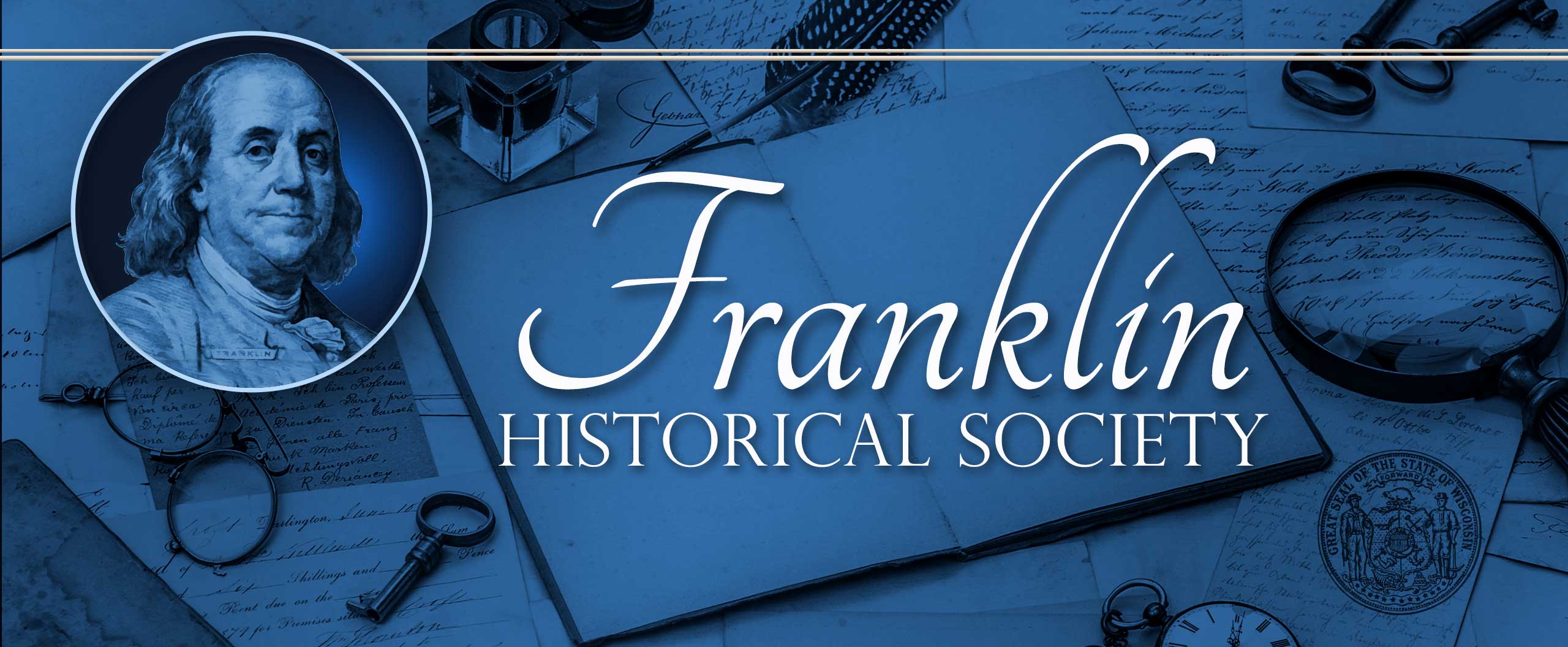Riding the Rails
By Judy (Nitz) Scherrer
Riding The Rails – Franklin Interurban Train
 The subject of building more commuter trains has been discussed in the last few years, but in 1904, there actually was an electric rail service in Franklin that began in the St. Martin’s area. St. Martin’s became a hub for travelers from Mukwonago, East Troy and other communities traveling to Milwaukee.
The subject of building more commuter trains has been discussed in the last few years, but in 1904, there actually was an electric rail service in Franklin that began in the St. Martin’s area. St. Martin’s became a hub for travelers from Mukwonago, East Troy and other communities traveling to Milwaukee.
By definition, the “interurban was a speedy, overweight, oversized cousin of the streetcar that would often share the same right of way. The train car measured 53 ft. x 90 ft. long with large windows and wood paneling that covered the interior walls.
The Milwaukee Light, Heat & Traction Co. (MLH&T) completed an electric railway into Hales Corners by 1903, and later the same year the company signed an agreement with the Franklin Town Hall Board to extend the line to St. Martins. When completed, the train stopped at the St. Martins Junction depot on 116th and Swiss St. and would continue to make stops in the area until 1939.
 At St. Martins Junction, the line branched in 2 directions: one branch tracked through Muskego and Big Bend to East Troy; the other branch, completed in 1909, traveled through Wind Lake and ended in Burlington.
At St. Martins Junction, the line branched in 2 directions: one branch tracked through Muskego and Big Bend to East Troy; the other branch, completed in 1909, traveled through Wind Lake and ended in Burlington.
The East Troy line, which had stops at Waterford Rd. (North Cape Rd.), and Town Line Rd. passed through Hales Corners and Mukwonago on its way to East Troy. Franklin stops on the Burlington line were at St. Martins Rd. and Ferndale (the Andrew Koelsch farm at 8945 St. 116th St.) Koelsch shipped milk from his farm from that stop. The train then continued to Durham Hill and then to the west side of Wind Lake on its way to Burlington.
The original contract for the Interurban provided transportation for passengers, mail, and express only. In 1930, the agreement was amended to include freight. A stub track on the west side of 116th St. in St. Martin’s was used for the freight service.
This stub track was used by Ed Griesemer, a cattle dealer who had a small stock pen on the west side of the track that could hold 30-40 cattle. Other merchants who used the freight service were: John Herda Co. and R.A. Mayer Co. for farm machinery, Schmidt Bros. for sugar and Andrew Koelsch for fertilizer. The fertilizer was shipped under Koelsch’s name, but it was actually a group of farmers and Koelsch who were shipping.
 The St. Martins depot itself was a 2-story structure that had the electrical equipment on the top floor. Tickets were not sold at the depot but were instead sold by the train conductor who issued them and collected the fees.
The St. Martins depot itself was a 2-story structure that had the electrical equipment on the top floor. Tickets were not sold at the depot but were instead sold by the train conductor who issued them and collected the fees.
In the depot on the first floor, there was a sales counter that sold candy, gum, magazines and newspapers. The newspapers were brought to St. Martin’s on the Interurban. According to Franklin old timers, it was a Mrs. Haig who sold the items at the counter and who would also use a two-wheeled cart to deliver packages to village merchants.
In 1936 Rural Co-op Service was organized. Members bought shares in the company and would share in the profits at the end of the year. Rural Co-op handled fertilizer, fuel oil, seed, gasoline and coal. They had storage tanks in the area of 116th St, near the stub track for unloading the freight, but when the Interurban left St. Martins, the Co-op moved to Hales Corners.
Although the electric train was a cheap way to travel in the early part of the 20th Century, the increasing use of the automobile and the Great Depression of the 1930’s led to its ultimate doom. Due to a loss in profits the Burlington Line was shut down in May 1938 and the East Troy line was discontinued by August 1939. St. Martin’s Junction was forced to close that same year.
By the 1940’s all electric rail systems traveling to East Troy, Muskego, Burlington, Hales Corners and St. Martins were shut down and tracks removed. Traces of where tracks once were can still be seen along several bicycle paths that exist today. When the railway system was gone, it ended another chapter of local Franklin history.

